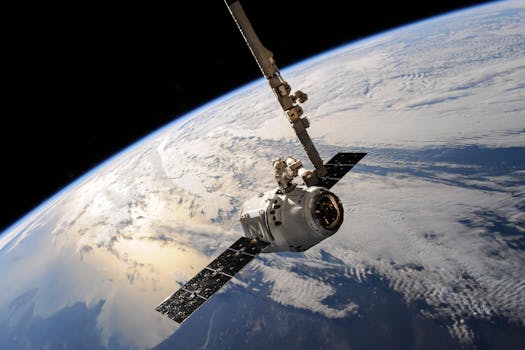
MEO Satellites: Revolutionizing Global Communication with Medium Earth Orbit Technology
Medium Earth Orbit (MEO) satellites are a type of satellite that operates in an orbit approximately 2,000 to 36,000 kilometers above the Earth’s surface. MEO satellites are playing a crucial role in revolutionizing global communication, offering faster and more reliable connections than traditional Geostationary Orbit (GEO) satellites. In this article, we will delve into the world of MEO satellites, exploring their benefits, applications, and the impact they are having on the telecommunications industry.
Introduction to MEO Satellites
MEO satellites have been around for several decades, but it’s only in recent years that they have gained significant attention and investment. One of the primary advantages of MEO satellites is their ability to provide lower latency connections compared to GEO satellites. This is because MEO satellites are closer to the Earth’s surface, resulting in a shorter signal travel time. Additionally, MEO satellites have a wider field of view, allowing them to cover more area with fewer satellites.
The use of MEO satellites has several benefits, including improved connectivity, increased capacity, and enhanced mobility. They are particularly useful for applications that require low latency and high-speed data transfer, such as video conferencing, online gaming, and cloud computing. MEO satellites are also being used for navigation, Earth observation, and weather forecasting.
Applications of MEO Satellites
MEO satellites have a wide range of applications across various industries. One of the most significant applications is in the provision of broadband internet services. MEO satellites can provide high-speed internet connectivity to remote and underserved areas, bridging the digital divide and enabling access to essential services like education, healthcare, and finance.
MEO satellites are also being used in the maritime and aviation industries to provide connectivity and navigation services. They enable ships and aircraft to stay connected while in transit, facilitating communication, navigation, and safety. Furthermore, MEO satellites are being used for Earth observation, allowing for the monitoring of environmental changes, natural disasters, and weather patterns.
The use of MEO satellites is also expanding in the field of IoT (Internet of Things), where they enable the connection of devices and sensors in remote and hard-to-reach areas. This has significant implications for industries like agriculture, mining, and logistics, where IoT devices can be used to monitor and manage assets, track shipments, and optimize supply chains.
Benefits and Challenges of MEO Satellites
The benefits of MEO satellites are numerous, including improved connectivity, increased capacity, and enhanced mobility. They offer lower latency connections, making them ideal for applications that require real-time communication. MEO satellites also have a wider field of view, allowing them to cover more area with fewer satellites.
However, there are also challenges associated with MEO satellites. One of the primary challenges is the high cost of launching and maintaining a constellation of MEO satellites. Additionally, MEO satellites are more complex to operate and manage than GEO satellites, requiring sophisticated ground control systems and network management.
Despite these challenges, the use of MEO satellites is expected to continue to grow in the coming years, driven by increasing demand for low-latency, high-speed connectivity. As technology advances and costs decrease, we can expect to see more innovative applications of MEO satellites, transforming the way we communicate and interact with each other.
Conclusion
In conclusion, MEO satellites are revolutionizing global communication, offering faster and more reliable connections than traditional GEO satellites. With their lower latency, wider field of view, and increased capacity, MEO satellites are ideal for applications that require low-latency, high-speed data transfer. As the telecommunications industry continues to evolve, we can expect to see more innovative applications of MEO satellites, transforming the way we communicate and interact with each other.





